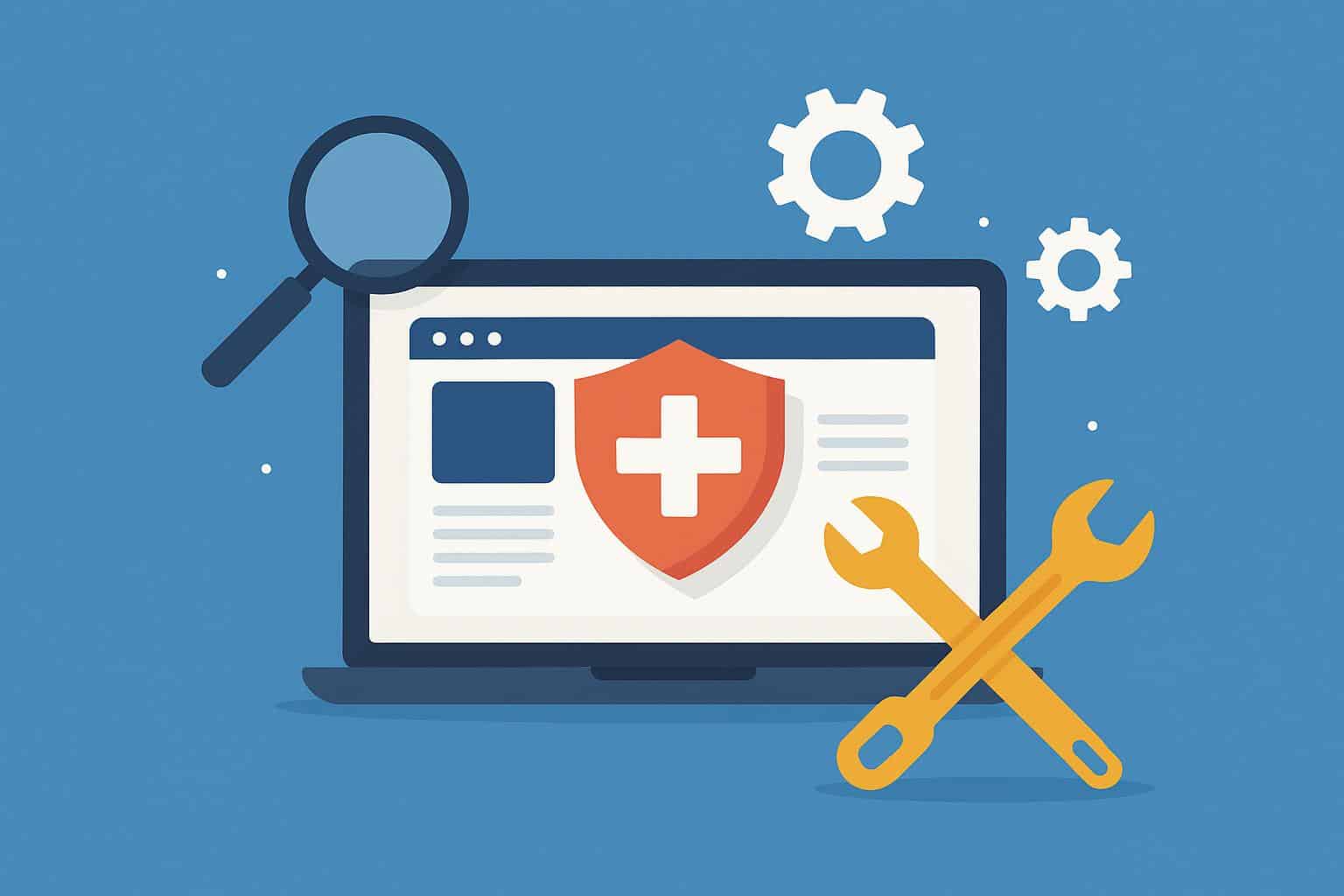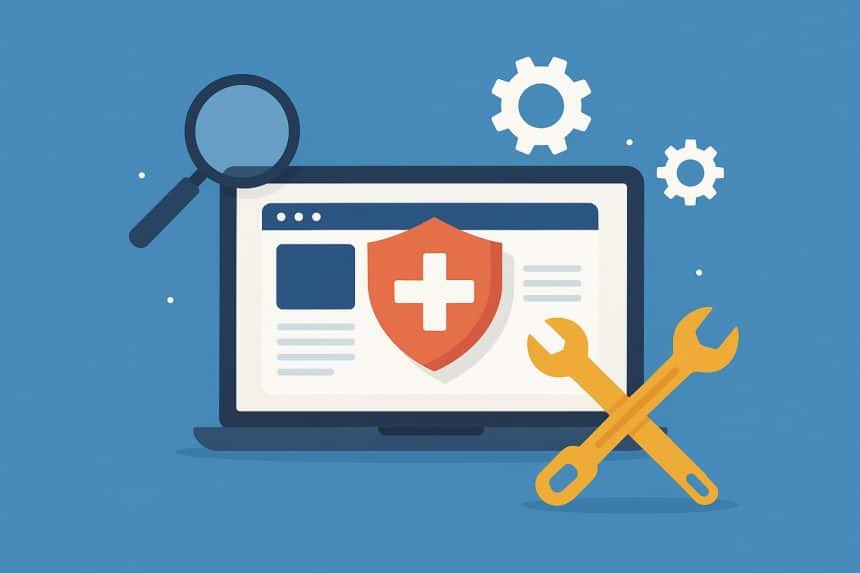Every business that operates today has an online presence through its website. It is the one-stop destination for your customers to discover all about your business. It is the first point of contact for them with you. A good website is not just about having an attractive layout and design; it’s also about providing a seamless user experience. It should demonstrate its consistent performance in all scenarios, all the time. Any glitches found in your website can severely affect customer experience and trust. Your professionalism is reflected in how you present your business on the website. To stay consistent in its performance, a website needs constant maintenance. Neglecting maintenance or browser compatibility can result in slow loading times, image distortion, and broken features – all factors that drive your customers away. By focusing on two aspects – constant maintenance and browser compatibility, your website can deliver consistent performance all the time and in all the diverse usage patterns.
The Role of Regular Maintenance of Your Website
No matter how great your product or service is, until you display its strength to the customers, you won’t fetch any business. Marketing efforts are diverse, but if there is any one destination where they all converge, it is your website. Your website gives you the platform to show your offerings, your strengths, values, and the whole skeleton of your business. These websites often need regular maintenance for several reasons, like efficiency, security, and constant alignment with changing business goals. Your website’s maintenance has a direct impact on factors like:

Customer Trust
When your customer is interacting with your website for the first time, they usually have two thoughts running through their mind: discovering the product and judging the brand’s standard. While product descriptions can be flawless on your website and are mostly static information, building a brand’s image depends completely on your website’s performance. If they find a broken link, distorted image, or a warning message, they immediately lose trust before any relationship is formed.
Fetching More Business
For any online business store, speed is the most crucial factor. Your conversion rate solely depends on how robust your website is. One of Google’s studies shows that any website that takes more than three seconds to load loses almost half of its customers. Through regular maintenance activities, like optimizing image size and quality, cleaning up code, and fixing any bugs, you can not only improve your website’s credibility, but also fetch more business.
Enhance SEO Performance
Google often rewards well-maintained websites and shows them in its search results. If proper indexing is done from time to time, content is updated and well structured, and security measures are in place, then it all boosts your SEO performance, leading to higher traffic and brand visibility.
Best Website Maintenance Practices
A few best practices for keeping your website healthy and visible are:
Regular Updates and Backup
Your CMS, on which the website is hosted, often goes through frequent changes. Updating your website regularly keeps it compatible with the CMS. Neglecting updates can lead to bugs and make your website prone to hacking. While this is an ongoing activity, another best practice is to regularly schedule your website backup. This ensures you can roll back any recent changes to the site’s previous versions, preventing any data loss or downtime.
Ensure Website’s Security
If your business is all dependent on online presence, its security is of utmost importance. It is that non-negotiable factor that safeguards your customers’ profiles, data, and analytics. No gaps should be left in the security measures of your website. Install updated SSL certificates and enable secure connections through the HTTPS protocol. The admin area should be well protected through strong passwords, malware scanners, and firewalls.
Optimization of Speed and Performance
Speed is something that matters all the time in providing a well-designed customer experience. Even a split second in loading matters. Diagnose the website’s speed-related issues through tools like Google PageSpeed Insights or GTmetrix and fix the issues.
Browser Compatibility
In today’s modern digital world, customers come from diverse usage backgrounds. They might be using different browsers, their versions, devices, or OS’s. To provide a consistent experience to all your users, website cross-browser testing must be done from time to time. Any recent changes in the website must be checked across all platforms and browsers to ensure they reflect uniformly.
Every browser has its unique way of interpreting the code. An image may load perfectly on Chrome but get distorted on Safari. Cross-browser testing fixes these kinds of issues across all the possible combinations of browsers, devices, and platforms. Missing out on testing on just one kind of browser may lead to the loss of a huge number of customers using it. Hence, cross-browser testing is not just a technical enhancement but has a direct impact on your business.
Best Practices For Browser Compatibility
A few best practices you can adopt to ensure browser compatibility are:
- Use Automated Tools: There are several automated testing tools available for browser compatibility testing, like BrowserStack, testRigor, and Sauce Labs.
- Adopt Responsive Design: This measure should be taken while building your website. A responsive design allows websites to resize automatically based on the device’s screen resolution. This is especially important for providing a flawless experience of your website on mobile devices.
- Use Analytics: Through web analytics tools like Google Analytics, you must read which browser or device your customer uses most. Based on that, you must prioritize your testing.
- Regression Testing: After every change your website goes through, you must check all the existing functionality to ensure it remains unaffected on all browsers.
Closing Statement
Your website is the lifeline of your business. Maintenance and compatibility are not just good to have but essential features to keep your website up and running all the time. Think of it like a physical showroom your customer visits. You would need to clean up the glass windows, the furniture, and all the interiors, always to keep them shiny and attractive, to provide a soothing experience to your customers. Any great feature may not be noticeable by the customer, but even the slightest glitch can be detrimental to your brand image. Your website should not only provide information to your customers, but also reveal the professionalism and standard of your brand. And for that to have an impeccable impact on the customers, maintenance and compatibility are a must.











